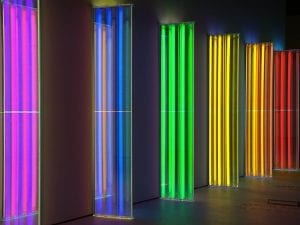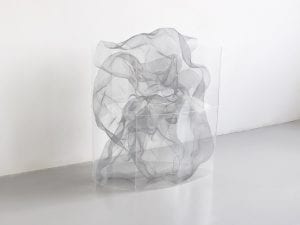Founded in 1999, the Live Art Development Agency (LADA) is an influential organisation in the realm of performance art in the UK and internationally. Supporting and facilitating the work of Live Art artists, the creative agency provides an extensive portfolio of resources, opportunities, projects and publishing activities worldwide. LADA places great emphasis on partnerships and collaborative practice, and works in consultation with artists and organisations from the cultural sector. We speak with Aaron Wright, Programmes Manager at LADA, about the agency’s overall aims, development and upcoming projects for the autumn.
A: LADA is a dynamic platform for contemporary artists working in the medium of performance and Live Art. Can you discuss the organisation’s overall aims and concept?
AW: LADA exists to support Live Art practices. We work to create the conditions in which innovation, diversity and risk can thrive, and to give agency to under-represented artists and approaches. We support artists, producers, curators, writers, academics, students and audiences in four distinct ways: 1. curatorial projects, programmes partnerships and events; 2. professional development initiatives such as our DIY scheme for artists and the co-ordination of the Live Art UK network for the wider sector; 3. resources such as our Study Room, website and online shop; and 4. publishing books, DVDs and Limited Editions. We always try to work in partnership and to contribute strategically to the overall development of the cultural sector. Due to our status as an Arts Council England ‘National Portfolio Organisation’ our core remit is to support work in the UK, though LADA has always worked internationally by profiling UK artists through programmes and screenings, and by collaborating with international artists on projects and publications, such as recent landmark books on the work of U.S. artists Lois Weaver and Ron Athey.
A: In your opinion why are creative agencies such as yourselves important for contemporary practices, especially performative works that are not conventionally located in the gallery space?
AW: By its very nature Live Art often doesn’t fit neatly in typical art and theatre spaces and programmes so we do a lot of work advising both artists and organisations on how to create appropriate and effective contexts and conditions for Live Art. Through constant dialogue with artists we’re able to be more responsive to the changing needs of artists and try to find ways to be responsive and reactive to them. Live Art spans a spectrum of practices so it doesn’t work to have a prescriptive ‘one size fits all’ approach – it’s more complex than just cash and studio space, and we’ve created initiatives that respond to that. Whilst there has been a boom in performance within galleries over the last few years, much of it seems to be an add-on to an exhibition, or marketing for the sellable objects. The reality is that very few artists working with Live Art are being represented effectively by gallerists – I think we offer a different perspective to sustaining a career as an artist. Live Art has a different kind of economy to the gallery system: one that works on wage rather than selling.
A: Now in its ninth year, LADA’s Restock, Rethink, Reflect project is an examination of identity. How does performance, as an art form, champion identity themes such as gender, race and diversity?
AW: Still, the arts is largely dominated by the privileged. Restock Rethink Reflect (RRR) is our attempt to address this and advocate for the work of Black, disabled, female and other marginalised artists who are still disproportionately represented in our arts ecology. Performance, essentially a conversation between bodies in a set time and space, is the most visceral medium for discussing body politics. Many marginalised artists work with their live bodies as a tactic. Live Art is very often political and explicitly activist. Performance is more meritocratic in this sense too: you don’t need materials or a huge studio to make a performance, you just need a body.
RRR has manifested three times so far, on race, on disability and on feminism, each a sort of communal investigation. They usually start with a provocation and this acts as a way to invite people into the process. We’ve found that a community grows around each project and together we plot next steps, whether that be further research public programmes and events, or resources and publications. The fourth edition will take place over the next two years, with a focus on Class and Privilege.
A: LADA focuses on the DIY aspect of Live Art. Is the agency influenced by a particular tradition within art, and how does the DIY project seek to interact with artists?
AW: Performance Art is a movement of the 1970s, though that term is still applied contemporaneously, and you can trace a lineage back much further to Fluxus, Dada and beyond too. This history has been well documented in books like Roselee Goldberg’s Performance Art: From Futurism to Present, but these narratives are simplified and don’t truly reflect the rich histories of diverse and brilliant work happening across the world, and completely ignore more ‘theatrical’ and experimental stage-based work. LADA is interested in both Visual Art performance practice and more theatrical, stage-based practice.
It’s a mistake to think all Live Art practice is ‘DIY’, which connotes ‘lo-fi’ and cheap to make. Many Live Artists today work with producers and command big budgets for their increasingly complex work. However, our DIY professional development scheme empowers artists to ‘prescribe and run their own professional development projects. Artists propose unusual research and development projects that they then invite other artists to join them in – peer to peer exploration. DIY was born as a reaction to the fact that many arts organisations were offering prescriptive training and masterclass opportunities. Where Live Art is concerned, the development needs of artists are as varied as the art itself.
A: As an organisation that boasts stalwarts of performance art as its Patrons, who do you see yourselves collaborating with in the future?
AW: Collaboration is at the core of everything LADA does – we’re too small a team to get much done otherwise. All of our projects, publications and initiatives are usually collaborations with artists and other organisations. We’ve just embarked on a four year European Union funded research project called CAPP (Collaborative Art Practice Partnership) in collaboration with eight other trans-European partners, including Agora in Berlin, Hablernarte in Madrid and Tate Liverpool, that aims to unpick the impact and ethics of collaborative practice – by working together and pooling our findings we’re able to conduct much more thorough research which will be far more useful in the long run.
Our Patrons list attempts to reflect the diversity of Live Art practice whilst celebrating the achievements of artists with substantial bodies of work behind them, as well as being profile raising for LADA. We’re delighted that Ron Athey and Anne Bean have recently become LADA Patrons and we’re looking forward to working with them in lots of ways over the coming years.
A: Which live artists are you particularly excited to see new work from?
AW: We spend a lot of time researching and seeing work by recent graduates and emerging artists with the view to supporting and signposting them to further opportunities. Many of the artists in the upcoming SPILL National Showcase (happening in London in November) are artists that we’ve known for a couple of years and it’s great to see their work being supported by other organisations and reaching wider audiences. Similarly, it’s exciting to find out about the work of more established artists that I haven’t come across before. In the past year I’ve become acquainted with the work of both Liz Aggiss and Shaun Caton, both well known to LADA but personally unknown to me. On top of all of that we’re particularly excited about some LADA commissions that will premiere this autumn, including an alternative guided tour of St Helens by the artist Marcia Farquhar as part of a weekend programme we’re curating for Heart of Glass (20 – 21 November) and a new performance by Rocio Boliver that’s going to be the final event of a weekend long programme of work called Old Dears that we’ve curated for Chelsea Theatre on 26 – 27 November.
For more information on LADA, visit www.thisisliveart.co.uk.
Follow us on Twitter @AestheticaMag for the latest news in contemporary art and culture.
Credits
1. Tania El Khoury, part of Documenting Intimacy, 2015, in collaboration with LADA. Image courtesy of the artist and LADA.





